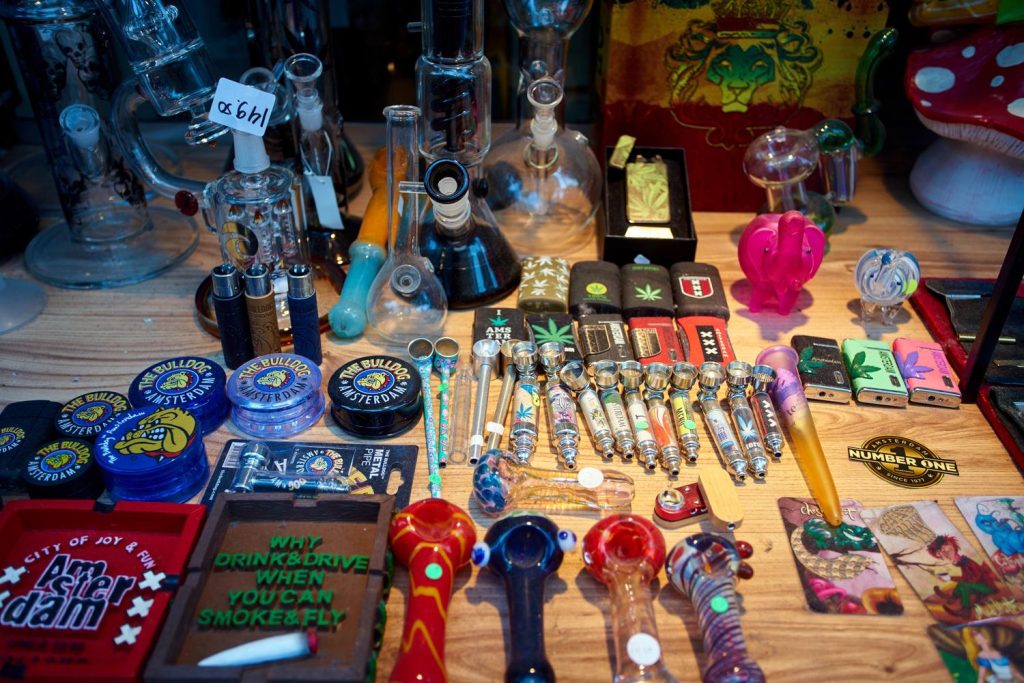Who Invented Vapes?
July 25, 2025
Vaping has become a global phenomenon over the past two decades, with millions of users worldwide. As vaping continues to be debated in public health, regulation, and consumer trends, it’s natural to ask: who invented vapes? Understanding the origin of this technology provides context on its intended use, how it became so widespread, and the driving factors behind its invention. This post explores the invention of vapes, the evolution of vaping devices, and the key figures involved in their development.
The Early Concepts of Vaping (1960s–1980s)
While many assume vaping is a modern invention, the basic concept dates back several decades. The first known attempt to replace traditional smoking with a smokeless alternative came in 1963, when American inventor Herbert A. Gilbert filed a patent for a device he called a “smokeless non-tobacco cigarette.”
Herbert A. Gilbert’s Prototype
Gilbert’s device aimed to heat flavored air instead of burning tobacco. It was designed to deliver a similar sensory experience to smoking, without combustion or nicotine. His patent described a system that heated a liquid and turned it into vapor, resembling how vapes function today. However, Gilbert’s prototype never went into mass production.
Several challenges kept it from taking off:
- Technology Limitations: Battery and heating technologies were not yet advanced enough to support reliable, portable devices.
- Low Demand: In the 1960s, cigarette smoking was socially acceptable and widely promoted. There was little public demand for alternatives.
- Lack of Commercial Support: Manufacturers and investors showed limited interest in non-tobacco smoking products at the time.
Though Gilbert’s idea was ahead of its time, it laid the conceptual groundwork for what would later become vaping.
The Modern Vape: Hon Lik and the Breakthrough (2003)
The person most commonly credited with inventing the modern vape is Hon Lik, a Chinese pharmacist and medical researcher. In 2003, he developed the first commercially viable electronic cigarette—a device that vaporized a liquid solution containing nicotine.
Background of Hon Lik
Hon Lik was a heavy smoker who lost his father to lung cancer. Motivated by a desire to reduce harm from tobacco use, he sought a way to deliver nicotine without combustion. Working for a medical company that produced traditional Chinese remedies, Hon used his pharmaceutical knowledge to experiment with new delivery systems.
He eventually invented a battery-powered vaporizer that turned a liquid solution into inhalable aerosol. Unlike Gilbert’s prototype, Hon’s e-cigarette used nicotine-containing liquid, making it a realistic substitute for smoking.
Technical Components of His Invention
- Battery: Powered the heating element.
- Ultrasonic Atomizer: Initially used to vaporize the liquid.
- Nicotine Solution: Delivered the desired effect to users.
- Mouthpiece & Cartridge: Enabled easy use and replacement.
This design was the basis of the first commercial e-cigarette, and it marked the true beginning of the vaping industry as we know it today.
From Invention to Commercialization
Hon Lik’s invention was patented in China in 2003 and marketed by 2004. The product received significant attention, especially as health concerns around smoking began to rise globally. By 2006, the product entered European and North American markets, where it was initially met with curiosity and skepticism.
Growth of Vaping as a Market
The early e-cigarettes were relatively simple in design, known as “cigalikes” due to their resemblance to traditional cigarettes. These devices included a small battery, a heating coil, and a cartridge filled with e-liquid. Over time, technological improvements and user feedback led to a wider variety of vaping products:
- 2007–2009: The rise of e-cigarettes in the West, fueled by growing awareness of smoking-related health risks.
- 2010–2013: Introduction of tank systems and variable voltage mods allowed for more customization.
- 2015–Present: Development of compact pod systems, salt nicotine, and disposable vape pens.
Manufacturers responded quickly to demand, introducing innovations such as rechargeable batteries, leak-resistant designs, and temperature control features. The vaping market has now grown into a multibillion-dollar industry, with users across a wide range of age groups and backgrounds.
How Vaping Technology Has Evolved
The technological leap from Hon Lik’s invention to modern vaping devices has been significant. Today, users can choose from a wide variety of products tailored to different preferences, from simple disposable vapes to complex devices that allow total control over vapor production.
Changes in Design and Functionality
- Cigalikes: Early devices mimicked the look and feel of cigarettes. They were easy to use but offered limited battery life and vapor output.
- Vape Pens and E-Go Devices: Slightly larger, pen-style vapes introduced refillable tanks and improved performance.
- Box Mods and Advanced Systems: These feature adjustable wattage, larger e-liquid capacity, and customizable parts.
- Pod Systems: Sleek, user-friendly devices that use pre-filled or refillable pods with high nicotine delivery efficiency.
- Disposable Vapes: Convenient for users who prefer simplicity without the need to refill or recharge.
Innovation in E-Liquids
In parallel with hardware development, e-liquids evolved to include a wide array of flavors, nicotine strengths, and formulations. Nicotine salts, a newer form of nicotine that absorbs faster and hits smoother, gained popularity especially in compact devices like pod systems.
Overall, the evolution of vaping technology has focused on enhancing portability, ease of use, battery performance, and personalization.
Global Impact of the Vape Invention
Hon Lik’s invention didn’t just create a new product; it changed the way society thinks about nicotine delivery. Vaping has become a global public health issue, with widespread implications for regulation, consumer behavior, and medical research.
Public Health Perspective
Vaping is often presented as a harm reduction strategy—delivering nicotine without the toxic byproducts of burning tobacco. Some studies suggest that switching from smoking to vaping may lower exposure to harmful chemicals. However, health agencies remain cautious due to the lack of long-term studies and concerns about youth vaping.
- Regulatory Reactions: Countries vary in how they regulate vaping. Some treat it as a consumer product, while others regulate it like a pharmaceutical product or outright ban flavored options.
- Ongoing Research: Studies continue on the long-term health impacts, especially concerning lung health, cardiovascular risk, and nicotine addiction.
Consumer Behavior Shift
The rise of vaping has changed how nicotine is perceived and consumed:
- Many adult smokers report using vapes to help quit cigarettes.
- Non-smokers, particularly younger users, are experimenting with vaping out of curiosity or peer influence.
- Social trends and flavor variety have also shaped user adoption, especially in online communities.
The market has shifted from a niche alternative to a widespread lifestyle product in just over a decade.
Debates Around Authorship and Recognition
While Hon Lik is broadly recognized as the inventor of the modern e-cigarette, discussions about intellectual credit still arise. Supporters of Herbert A. Gilbert argue that his early patent should receive more recognition. However, Hon Lik’s design was the first to include nicotine and the first to succeed commercially.
Why Hon Lik Gets the Recognition
- His design introduced battery-powered heating, liquid nicotine delivery, and user accessibility.
- He was the first to commercialize a working product with a sustainable market.
- The modern vaping industry traces directly back to his 2003 design.
Even though others contributed conceptual ideas, the transition from concept to market belongs largely to Hon Lik.
Smoke GPT Serving the Clayton Woods Community and Beyond in Houston
Smoke GPT is dedicated to serving the diverse needs of the local community of Houston, including individuals residing in neighborhoods like Clayton Woods. With its convenient location near landmarks such as the Brays Bayou Park and major intersections like W Bend Dr and Vintage Valley Dr (coordinates: 29.71700749999999, -95.64372069999997), we offer Vape Shop Houston services.
Get Vape Shop Houston Services at Clayton Woods. Now
Navigate from Clayton Woods to Smoke GPT Now
Conclusion:
The question of who invented vapes highlights the complex and evolving nature of technological innovation. While Herbert Gilbert introduced the first known concept in 1963, it was Hon Lik’s breakthrough in 2003 that marked the real beginning of the vaping revolution. His motivation was personal, his design practical, and his invention transformative.In just two decades, vaping has gone from an experimental alternative to a global industry with millions of users, ongoing regulatory debates, and a lasting impact on how nicotine is consumed. As the market and public understanding continue to evolve, the legacy of Hon Lik’s invention remains a cornerstone of modern nicotine delivery.
Frequently Asked Questions
1. Who is officially recognized as the inventor of vapes?
Hon Lik, a Chinese pharmacist, is officially recognized as the inventor of the modern electronic cigarette. He developed and patented the first commercially viable vape in 2003, which used a battery-powered heating element to vaporize a nicotine-containing liquid.
2. Did anyone invent a vape before Hon Lik?
Yes. In 1963, Herbert A. Gilbert filed a patent for a “smokeless non-tobacco cigarette” that used heated, flavored air as an alternative to tobacco smoke. However, his design lacked nicotine, wasn’t mass-produced, and didn’t gain commercial success. Hon Lik’s invention is considered the first modern vape to combine technology, nicotine delivery, and market viability.
3. What motivated Hon Lik to invent the e-cigarette?
Hon Lik was a heavy smoker and lost his father to smoking-related illness. He wanted to find a safer alternative to traditional cigarettes that could still deliver nicotine without the harmful effects of combustion. This personal motivation led him to develop the first functioning e-cigarette.
4. How has vaping technology changed since its invention?
Vaping technology has evolved significantly. Early devices resembled cigarettes (cigalikes), but modern vapes now include advanced features such as temperature control, refillable tanks, pod systems, and high-capacity batteries. E-liquids have also changed, offering nicotine salts, various strengths, and a wide range of flavors to suit different users.
5. Why is the invention of vapes important today?
The invention of vapes represents a major shift in how nicotine is consumed. It opened the door to harm-reduction strategies for smokers and led to a new global market. However, it also sparked ongoing debates about youth use, health risks, and regulation. The impact of vaping continues to shape public health policy and consumer behavior worldwide.
Elevate Your Experience with Smoke Shop GPT Rewards
Join the Crew and Elevate Every Puff
Get more out of every cloud with Smoke Shop GPT’s exclusive rewards program. Earn points on every purchase and unlock discounts, special drops, and members-only perks.
Sign up today and start chasing rewards your way.



